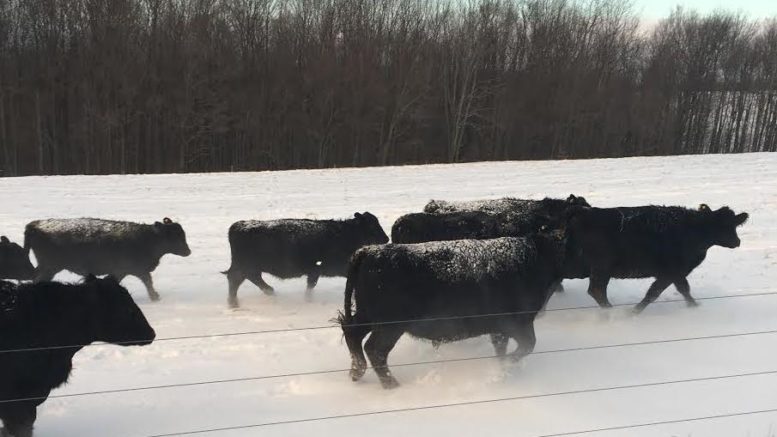Happy cows come from New York – Or wait, is that cold cows. With winter upon us, it is important to know that the cows you see outside are not in distress. Living in a rural community, as we do, you are likely to drive by cows outside and wonder if they are cold, and why they aren’t inside a barn where they would be sheltered from the elements. Well here’s why.
Did you know that the ideal temperature for a cow ranges from 25° F and 65° F? Actually, hot weather can actually be more dangerous to cows than cold. Cows have an average body temperature of 101.5° F, and because they are ruminant animals, they partially digest their food through fermentation in the rumen, a process that produces heat. This process can be thought of as a large internal heater that takes up one-third of the cow’s body. In the winter, this is key in helping cows keep warm.
Cows have very thick skin, and in some areas it can be as thick as a half-inch, and this keeps the cows well insulated! To put this into perspective, the thickest skin on a human is the soles of our feet, which is a little over 1/8 of an inch thick. Another interesting fact is that cow’s legs have very little muscle. They have evolved to divert warm blood in a way that keeps their legs from freezing and getting frostbite.
Another factor contributing to cow warmth is the piloerector muscles in their skin. These muscles allow the hair to stand upright in cold weather, and trap warm air in. As it gets colder, the thicker and longer hair will stand up and catch the snow, this forms a layer that creates an air pocket that is warmed by body heat and works to keep the cow warm.
Cows actually can become sick from being housed inside during the winter months if there is not proper ventilation. An illness frequently seen in livestock in the winter months is respiratory infections. Respiratory infections develop when there are “bugs” breeding in warm, moist, environments (like one that is created by a group of cows loafing in a winter barn). Instead it is recommended that cows have a solid windbreak so they can get out of the wind when they need to, which allows them to conserve heat.
Some other key factors in the keeping the cows happy include keeping cows clean and dry (wet coats have greatly reduced insulating properties and make cows more susceptible to cold stress). Mud-caked coats also reduce the insulating properties of the hair. Cows are provided additional feed in the winter, and an ample water supply in the winter is also important. Limiting water can limit feed intake and make it more difficult for cows to meet their energy requirements.
Next time you see snow covered cows, think back to this information, and know the cows are happy, and enjoying this glorious New York winter wonderland.



Be the first to comment on "Snow Covered Cows in a New York Winter Wonderland"